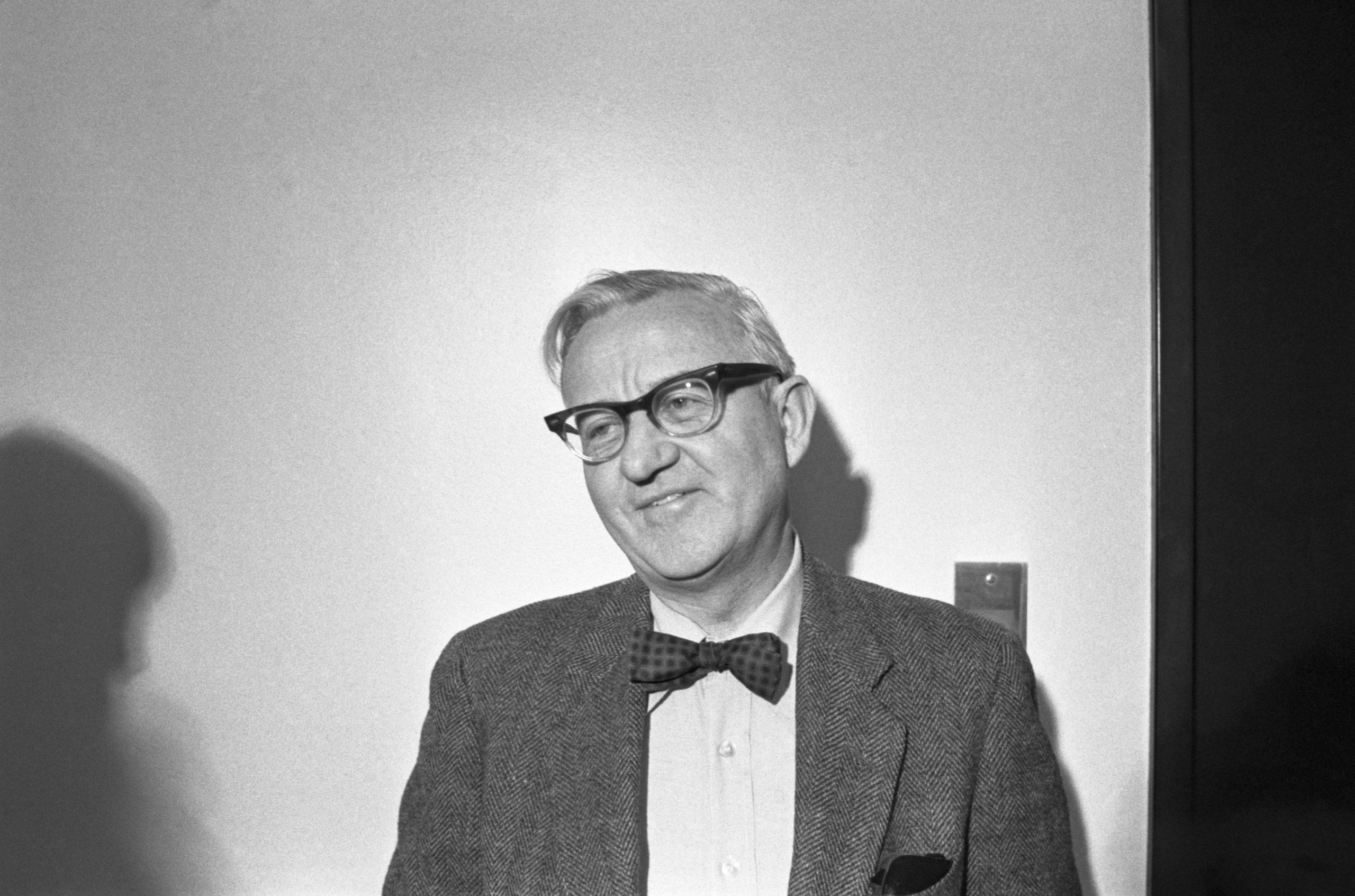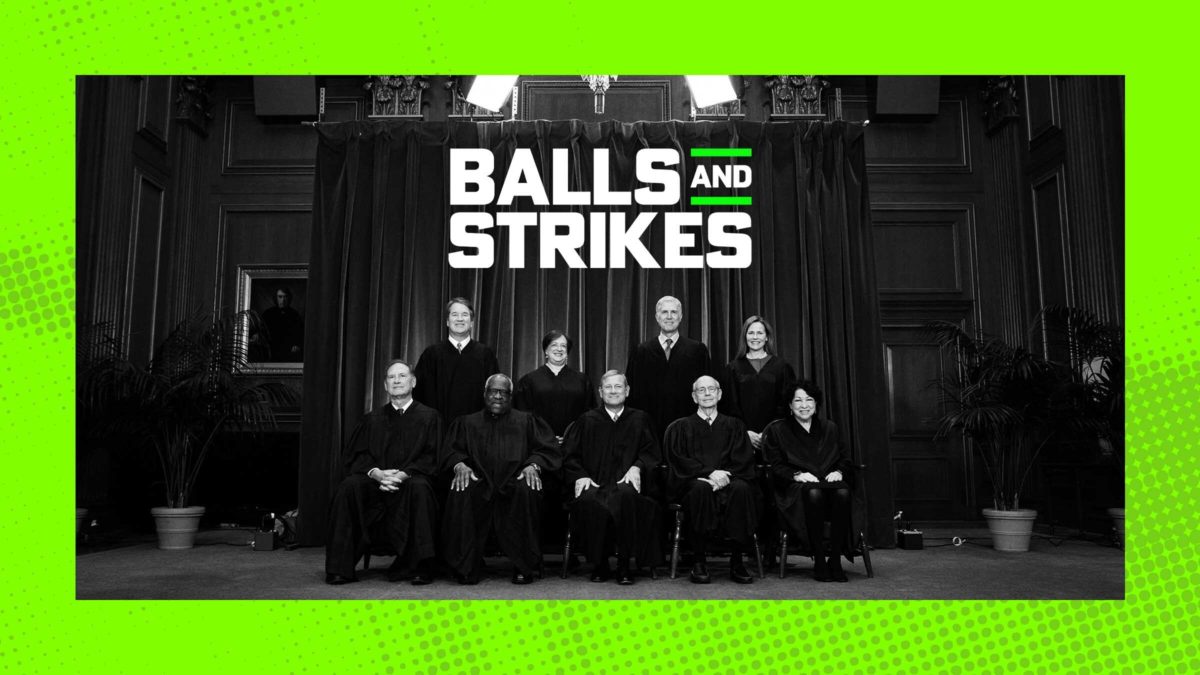Supreme Court justices don’t often discuss their media diets, but the occasional glimpses we do get hint at an institution where Fox News Brain is a common and perhaps incurable affliction. In a 2013 interview, for example, Antonin Scalia made a big deal out of having canceled his Washington Post subscription because it was “slanted,” “nasty,” and “so shrilly, shrilly liberal.” He also named as his favorite talk radio host his “good friend” Bill Bennett, who once asserted that a failsafe way to reduce crime would be to “abort every Black baby in this country.”
Other details are similarly discouraging. In May, Clarence Thomas joked that he’d resign the moment he starts doing his job as poorly as The Media does theirs, and his wife Ginni’s coup-curious hobbies leave little doubt about which channels their TVs are probably tuned to. Before becoming a justice, Neil Gorsuch moonlit as a blogger for the National Review. If Sam Alito doesn’t watch Tucker Carlson every night, his ability to channel that trademark strain of simmering resentment is among the great coincidences of our time.
Conservative media’s influence on judicial thought, however, is not a new phenomenon. In his book Too Close to Call, a tick-tock of Florida’s disastrous 2000 presidential election that the Court ultimately handed to George W. Bush, author Jeffrey Toobin recounts a troublingly revealing nugget about the mindset of Justice Sandra Day O’Connor. On December 4—the same day the Court issued its first opinion in Bush v. Gore—O’Connor absolutely teed off on the Gore campaign at a private party in Washington.
“You just don’t know what those Gore people have been doing,” said O’Connor, a Republican appointee, whom Toobin describes as “livid” and speaking “with fervor.” “They went into a nursing home and registered people that they shouldn’t have. It was outrageous.” The vibes here are consistent with her widely-reported morosity at an Election Night watch party, when she proclaimed news of Democratic candidate Al Gore’s apparent victory “terrible” and left the room.
Toobin, seemingly surprised, notes that this particular rumor had “circulated only in the more eccentric right-wing outlets.” Whatever the precise origins of this mysterious little tale, it seems to have remained in those circles ever since. A 2001 report by Michigan Congressman John Conyers refers briefly to “absentee vote forging” by nursing home attendants in Alabama, but does not suggest the issue was (1) widespread or (2) mattered in a state Gore lost by 15 points. A dissenting opinion from a 2001 U.S. Commission on Civil Rights report on Black voter disenfranchisement in Florida chides the Commission for ignoring “allegations involving fraudulent absentee ballots in nursing homes,” but nothing related to illicit “registration” practices (??) with which O’Connor was so preoccupied. At the very least, it’s safe to say that whatever she was referring to here, it was not among the 10,000 most consequential scandals of the 2000 election to which you’d hope a Supreme Court justice with the power to decide it would be attuned.
Toobin, charitable as ever, says it was “unclear” where she had picked up on this “unproven accusation,” about which she was evidently angry enough to vent before an audience. His own description of its provenance, though, seems to yield an obvious answer.
It is not, of course, a breach of a judge’s ethical obligations to read. But this anecdote is a reminder that America’s insular, sprawling, and conspiracy-addled conservative media ecosystem can be as influential for honest-to-God Supreme Court justices as it is for, say, your average January 6 Capitol tourist. As professor Richard Neumann noted in a 2004 law review article on the subject, the appellate record in Bush v. Gore “contained no allegations of evidence of this kind.” Yet O’Connor had apparently heard, absorbed, and accepted it as an important fact by the time the case came before her. In modern parlance, it was enough that many people were talking about it.
As always, you can find us at ballsandstrikes.org, or follow us on Twitter @ballsstrikes, or get in touch via [email protected]. Thanks for reading.
This Week In Balls & Strikes
Could the Federal Reserve Save Climate Action From the Supreme Court?, Aaron Regunberg
Monetary policy is in the news. It’s also all but immune from judicial review.
Federal Court Punishes Man Who Appealed Unfair Sentence By Finding Different Reasons to Keep Him In Prison, Yvette Borja
When judges have a multitude of tools to make prison sentences longer, even successful appeals of unfair sentences can be risky for criminal defendants.
Why Conservative Supreme Court Opinions Read Like True Crime Podcasts, Nicholas Goldrosen
Focusing on the gory details of crime papers over a key conservative policy goal: rolling back defendants’ constitutional rights.
How Ron DeSantis Is Squeezing the Voting Rights Act Out of Florida, Matthew Henderson
Seizing on the Supreme Court’s anti-voting bent, the Florida governor is trying to crack Black political power in the state’s Panhandle into irrelevance.
This Week In Other Stuff We Appreciated
The Supreme Court Could Foster a New Kind of Civil War, David Bernstein, Politico
With three decisions this month, the Court could break the back of Washington’s authority over regulation. How will states respond?
We Know How America Got Such a Corporate-Friendly Court, Sohrab Ahmari, Patrick Deneen and Chad Pecknold, New York Times
(Hint: The Federalist Society is prominently involved.)
Some Clinics Aren’t Waiting for Roe Decision to Stop Abortions, Claire Cain Miller and Margot Sanger-Katz, New York Times
Women can no longer get a legal abortion in two states.
Ahead of Supreme Court Decision on Abortion, Texas Is Already a ‘Post-Roe world,’ Advocates Say, Katie Kindelan, ABC
What it’s been like on the ground after months of a strict abortion ban.
This Week In Obscure Photos of Supreme Court Justices On Getty Images


